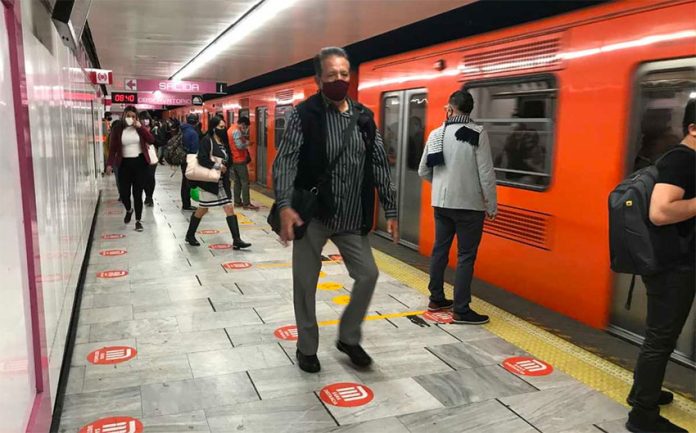Line 1 of Mexico City’s Metro reopened Monday after being shut down for two weeks due to a fire on January 9.
According to preliminary reports by the Mexico City Attorney General’s Office, the fire appears to have been caused by an equipment malfunction at the Buen Tono substation. It took the life of a police officer, who fell from the building as a result of the blaze, and over 30 people had to be treated for smoke inhalation.
The blaze temporarily shut down Lines 1–6 of the Metro, affecting over 1 million passengers. Until Monday, Lines 1, 2 and 3 had remained closed.
Line 1 currently has 10 trains in operation and will be adding the rest gradually, said the Metro general director Florencia Serranía. Staff will be available in stations along the route to assist commuters, she said.
Mexico City Mayor Claudia Sheinbaum has predicted that Line 3 will reopen on February 1 and Line 2 on February 8.
Line 1 reopened today despite flooding last Wednesday at some stations. Excess rainwater that would normally be pumped out of the underground stations rose as high as the bottom of stairways because of the lack of electric power.
Stations on Line 1 have been cleaned and sanitized since then, and no damage to the trains’ engines was detected, promised Serranía, who jointly supervised the final preparations to reopen the line with Sheinbaum on Sunday. Serranía said staff went train by train doing inspections for damage and successful test runs were done with empty cars over the weekend.
The city continues to offer a patchwork of options for commuters on all three lines, mainly the city’s municipal bus system, but also the trolleybus lines, licensed transportation companies and even the city’s police vehicles.
Adrián Lajous, the head of the city’s Ministry of Mobility (Semovi), announced Saturday that the city would be expanding bus routes on Line 2 to combat an issue detected Friday in which licensed bus companies being used as a supplemental service were lingering at certain stops, trying to fill their buses and causing inefficiencies in the system.
“What we saw was an inefficient use of these vehicles, with some very full — particularly those run by licensed bus companies — and others with 10% to 15% occupancy,” he said.
He said the municipal bus system is well-equipped to handle the influx of Metro passengers and that there would be staff available to help direct passengers.
Sources: Milenio, (sp), Animal Político (sp), El Sol de México (sp)
